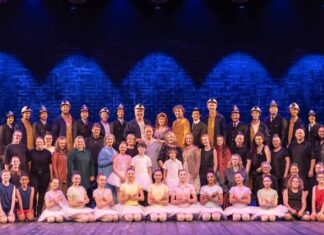Andrew Mathieson
STAN Klekovic looks down at a rare assortment of stamps and coins scattered across a table and utters, “That’s what kept me going.”
Leaving Croatia in 1959 for Whyalla to work at lonely shipyards, Stan found that living on the fringes of the South Australian outback was an austere existence.
So when workmates introduced the fitter and turner first to philately – or the collection and study of postal material – the new immigrant would run to the post office after every pay to buy the latest stamps.
“It was all new to me,” Stan recalls.
“I didn’t know it existed when I was younger.”
Swapping stamps during meal breaks was a bit of fun but it was chasing the original Sydney Harbour Bridge stamps that had Stan seriously licked as a collector.
Ambitious philatelists considered the 1931 five-shilling set the Holy Grail of stamps.
The most prized collection of its day finally took Stan more than 20 years to buy from a Melbourne swap meet.
“A few years they were up to $900 just for one single stamp,” he smiles.
“Not too many collectors had it because it was too expensive.”
Now boasting around 5000 priceless stamps in his possession, Stan modestly nods that the hobby has cost him “quite a few thousand dollars”.
The best stamps of his collection are from the 1930s, a golden era for the most ardent collectors.
Stan’s old favourite is a King George V two pence stamp to commemorate the first glider flight from Melbourne to Geelong.
Stan’s propensity for German stamps grew into an obsession but he also has a soft spot for the very few from his homeland.
Until Croatia declared independence from Yugoslavia in 1991, the country’s only previous stamps were issued between 1941 and 1945.
“I first found Croatian stamps in Whyalla – I didn’t even know they did exist,” Stan recalls.
“The first time I bought them was in 1963 for two shillings and six pence. I was so excited and thought ‘How the hell did these stamps come to Australia?’.”
The most precious in Stan’s collection comes from a 1914 set of three depicting Archduke Franz Ferdinand of the Austrian-Hungarian Empire.
Stand found the stamps on the back of a postcard sent from Sarajevo, the Croatian town in which Ferdinand was famously assassinated the same year, triggering World War One.
Now a veteran of Geelong Philatelic Society, 72-year-old Stan holds its Shrimpton Memorial Cup for services to local philately.
The award dates back to 1934.
“My name’s down there somewhere,” Stan says, pointing to the base of the cup.
Stretched for room on the impressive silverware, Stan’s name has become a footnote in the society’s history.
After relocating for a new job at Ford in 1964, the Hamlyn Heights resident would also later join Geelong Numismatic Society for coins collectors.
Word got around of his interest in commemorative coins but friends over the years have insisted on handing over foreign money from their trips overseas.
“I should be rich by now,” Stan laughs.
His fascinating oldest coin, dated 1863, is from R. Parker Ironmonger, of Moorabool Street.
“That was when Australia was short of coins for change and they got permission to mint token coins,” Stan explains.
“They’re very rare and each city – Geelong, Ballarat, Melbourne – had their own.”
More fascinating is Stan’s 5000 Kuna Croatian note from 1943, which found its way into circulation despite printers failing to pick up an absent prefix number and that half its colour was missing.
Stan can also boast he coined Geelong Croatian Centre.
He made a rough sketch of the new building and got an artist mate to make a mould for the design.
“No, no, no, not the centre,” Stan hesitates, “I designed the coin.”
Get the latest news to your email inbox FREE!
REGISTER






